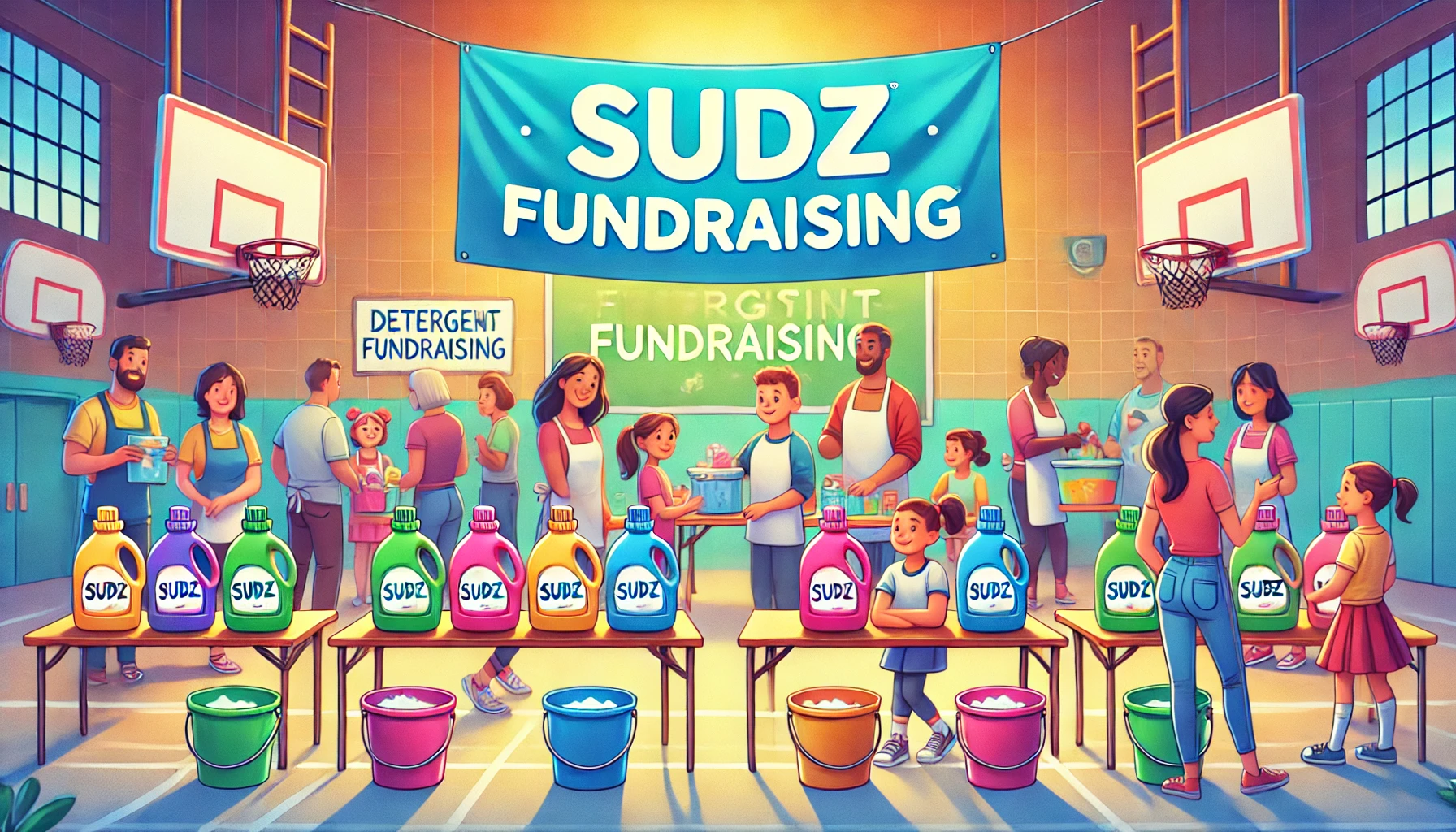Fundraising can be challenging for smaller schools, but with the right approach, detergent fundraising for small schools can yield big results. Schools with fewer than 500 students have unique strengths that can make their fundraisers efficient and effective. Here’s a guide to maximizing your detergent fundraising efforts through community engagement, resource optimization, and budget-smart strategies.
Small School Advantages for Detergent Fundraising
Smaller schools often have close-knit communities, which can be a major advantage for detergent fundraising for small schools. When parents, teachers, and local businesses know each other, they’re more likely to get involved and contribute.
- Tight-Knit Community: Communication is often more direct, so word-of-mouth spreads faster. Simple announcements in school newsletters or via social media platforms can reach most families quickly.
- Greater Engagement: Parents and community members are more likely to support fundraisers that directly benefit a smaller group of students. Many families feel motivated when they know their contribution is making a big difference in their child’s experience at school.
- Higher Impact: Fundraising success can often be seen immediately in smaller schools, whether it’s funding a new playground or updating classroom resources. This visibility keeps supporters motivated and connected to the fundraiser’s progress.
Resource Optimization for Maximum Impact
In detergent fundraising for small schools, making the most of your available resources is essential. While larger schools may have more people power, small schools can maximize their impact by allocating resources effectively.
- Efficient Supply Management: Order detergent supplies based on pre-orders to reduce waste and keep inventory streamlined. This approach minimizes excess and avoids financial risks from unsold products.
- Volunteer Allocation: Assign volunteers specific roles to cover multiple tasks efficiently, such as combining pick-up duty with outreach. By maximizing each volunteer’s impact, you can ensure tasks are covered without overextending resources.
- Centralized Pick-Up Points: Use one or two locations for pick-ups to save time and resources. A nearby community center or local business can act as a hub, reducing logistical complexities and encouraging parents to participate in distribution.
Community Engagement for Successful Fundraising
Community support is crucial to making detergent fundraising for small schools successful. Engage local businesses and groups that want to support your school’s efforts.
- Local Partnerships: Partner with nearby businesses that can offer small incentives or host fundraising events. A local coffee shop might offer a free cup for each detergent purchase, helping both your school and the business grow their support networks.
- Engage Parent Networks: Use parent-teacher organizations or local online groups to spread the word and drive support. This could involve sharing posts in neighborhood social media groups or organizing an online “kickoff” event to build excitement.
- Public Acknowledgment: Recognize community supporters on social media or in school newsletters. Highlighting businesses and individuals encourages further contributions and fosters a spirit of gratitude and mutual support.
Multi-Role Coordination to Streamline Efforts
When resources are limited, assigning multiple roles to each volunteer or team member can be a practical approach in detergent fundraising for small schools. With thoughtful coordination, small schools can make the most of each person’s time and effort.
- Role Overlaps: Encourage volunteers to take on dual roles where possible. For example, a volunteer can handle both order management and communication, reducing the need for separate roles and fostering strong team communication.
- Clear Communication: Keep volunteers and team members in the loop with regular updates. Consistent communication prevents misunderstandings and helps the team stay aligned with the fundraiser’s goals.
- Team Meetings: Hold brief check-ins, either in person or virtually, to ensure tasks are progressing smoothly. Regular touchpoints, even quick ones, can improve efficiency and keep the team motivated.
Limited Budget Strategies for Detergent Fundraising for Small Schools
Small schools often work with tight budgets, so cost-effective strategies are essential for successful detergent fundraising for small schools.
- Low-Cost Marketing: Use free or low-cost marketing channels like social media, school newsletters, and community bulletin boards to spread the word. Many local media outlets also support school initiatives at a discounted rate or even for free.
- Pre-Order Approach: Collect orders before purchasing supplies to avoid overstock and minimize upfront costs. This approach ensures every item ordered is backed by a commitment, eliminating the risk of unsold products.
- Community Donations: Request small contributions from local businesses to cover essentials like marketing materials or volunteer snacks. Even small sponsorships can make a significant difference in managing costs.
Success Stories from Detergent Fundraising for Small Schools
Looking at real-life success stories can be encouraging and provide inspiration for detergent fundraising for small schools.
- Case Study – Community Drive: A small rural school raised over $5,000 by partnering with a local grocer to advertise the fundraiser and provide a pick-up spot for orders. This partnership allowed the school to reach a wider audience and made pick-up easy and convenient for families.
- Example – PTA Support: Another school organized a “Family Night” where parents could purchase detergent and learn about school programs, resulting in a 20% increase in sales from previous fundraisers. This event provided a fun, social setting that brought the community together around the fundraising goal.
- Highlight – Classroom Challenge: One school motivated students through a friendly classroom sales challenge, with the winning class getting a pizza party. The friendly competition boosted student involvement, increased overall sales, and built camaraderie.
Scaling Techniques for Ongoing Success
To sustain and grow detergent fundraising for small schools, use scaling techniques that allow for flexibility and adaptability year after year.
- Incremental Goals: Set goals slightly higher with each fundraiser to encourage steady growth without overwhelming your team. Smaller steps make achievements feel attainable and keep team morale high.
- Expand Community Reach: Each year, reach out to a broader community base, such as neighboring towns or additional local businesses. These efforts can gradually expand your fundraiser’s network and bring in new supporters.
- Build on What Works: Review past fundraisers to see which strategies worked best and replicate them. For instance, if a classroom competition was successful, consider similar incentives to keep participants engaged in future fundraisers.
Organizing detergent fundraising for small schools is highly achievable with the right approach. By using efficient resource allocation, community support, and strategic scaling, smaller schools can achieve impressive fundraising results.
Ready to start a successful detergent fundraiser for your small school?
Contact Sudz Fundraising today!
We offer high-quality, high-profit detergent fundraisers tailored to meet the needs of schools of all sizes. Let’s work together to make your fundraiser a success!





